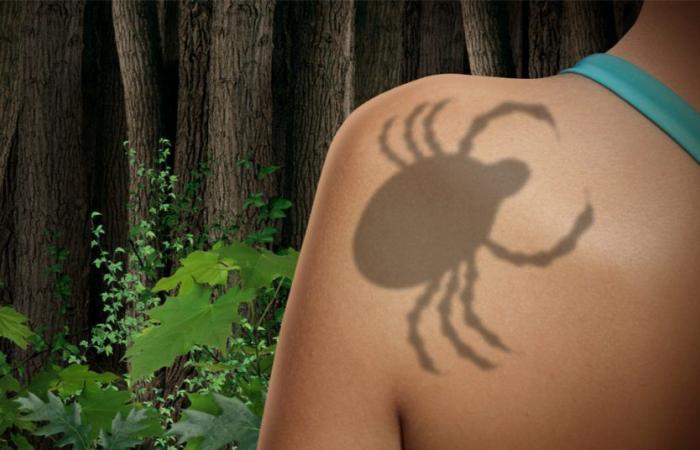It contracts when we are bitten by an infected tick: Lyme disease is anything but easy to spot in our body.
Written by Paul MaloJun 30, 2024, 11:00 AM
It’s hard to imagine that we’ll never come across ticks during our summer walks. With the risk of contracting the dramatic Lyme disease from their bite. A disease that’s anything but easy to diagnose…
A very stealthy bacteria
Summer means walks in the forest, in nature, camping… But it is also the risk of crossing paths with ticks. It is estimated that one in five carries borrelia, and will infect you with its bite. Indeed, Lyme disease is transmitted to humans only by a tick bite. The second vector of diseases after mosquitoes, due to the injection by these insects of an anesthetic saliva likely to contain pathogens.
But once bitten, diagnosing this infectious disease is actually anything but easy. Why ? Quite simply because the B. burgdorferi bacteria is in fact one of the most stealthy. Present in very low numbers in the human body, once infected, it is difficult to spot. What’s more, it hides in tissues that are difficult to access, such as the nervous system and joints. Finally, it proves difficult and slow to cultivate in the laboratory.
Indirect elements for diagnosis
But then, how can we diagnose Lyme disease? By relying essentially, for once, on indirect elements. This first involves starting with potential exposure to tick bites. To this will be added various clinical symptoms, both cutaneous (red spot spreading centrifugally for weeks), articular or neurological. Finally, a blood test will be required, or even a lumbar or articular puncture.
Concerning Lyme disease, only one biological test is available in France, and is based on a serological analysis. An analysis which does not directly detect the B. burgdorferi bacteria, but the antibodies produced during an encounter with it. In fact, it essentially aims to confirm an initial hypothesis.
Read also – Lyme disease – We finally know how to explain the causes of persistent symptoms
Tomorrow, an indirect vaccine?
But it may be that tomorrow, a vaccine could finally come and reverse the situation. Researchers from INRAE, in collaboration with ANSES and the National Veterinary School of Alfort are devoting their efforts to it. Their objective: to develop an “indirect” vaccination, by inoculating a harmless strain of the E. coli bacteria into an animal or a human. And this in order to stimulate the production of protective antibodies in the bloodstream.
Thus, when biting vaccinated individuals, these ticks will ingest antibodies in passing, thus affecting the Borrelia bacteria that causes Lyme disease and blocking its development. Researchers estimate that, within three to five years, farm animals could benefit from a protective vaccine. An idea that could, if it works, not only fight diseases transmitted by ticks but also those transmitted by mosquitoes, such as dengue fever, Zika or malaria.
Read also
Written by Paul Malo
https://www.consoglobe.com/redacteur/paul-malo
See his profile and all his articles
Become a writer






